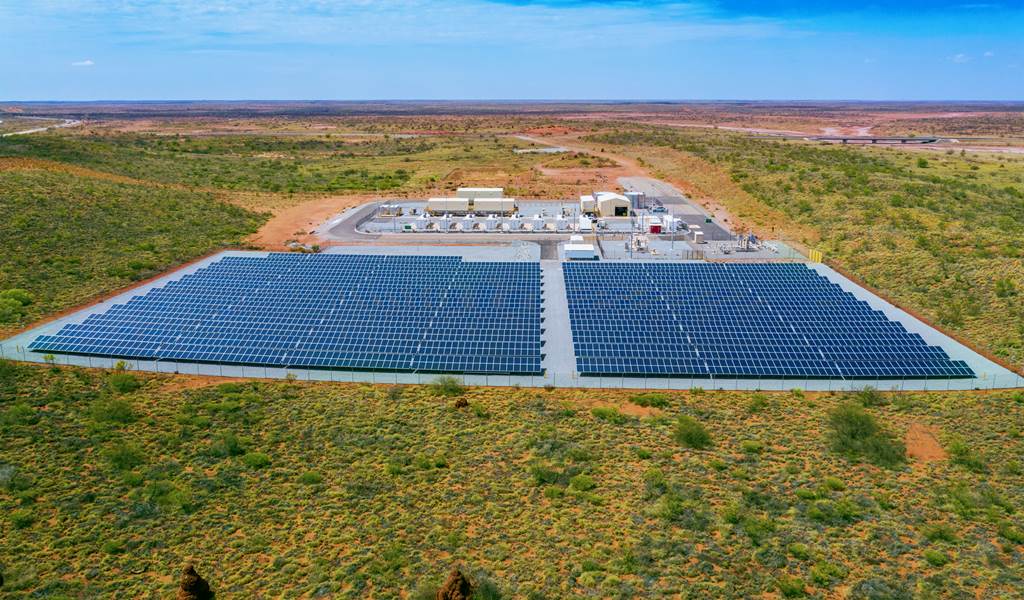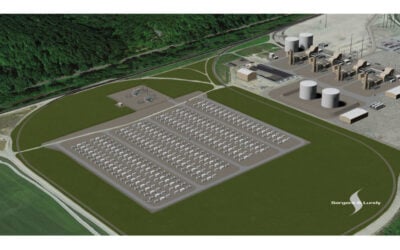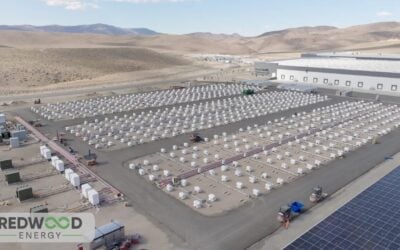
A remote town in Western Australia went fossil fuel-free for more than an hour, using a combination of solar power and battery storage and the project could be replicated by other isolated communities, the software provider behind it has said.
As reported by our sister site PV Tech last week, microgrid technology has enabled the small town of Onslow in the Pilbara region of Western Australia to maximise its use of renewable energy. Rooftop and ground mounted solar PV, battery storage at customer sites and at a substation have been linked together with a distributed energy resources management system (DERMS) and microgrid controller.
Enjoy 12 months of exclusive analysis
- Regular insight and analysis of the industry’s biggest developments
- In-depth interviews with the industry’s leading figures
- Annual digital subscription to the PV Tech Power journal
- Discounts on Solar Media’s portfolio of events, in-person and virtual
State-owned utility company Horizon Power and its project partners, US software company PXiSE Energy Solutions and Australian energy tech company SwitchDin, ran a demonstration of the system during which the entire town ran on renewables and storage for an 80 minute period.
The project is set to be fully commissioned later this year. The town is still not fully able to move away from some reliance on local natural gas engines and diesel generators, but this reliance is greatly reduced with the addition of the solar microgrid.
“The Onslow project serves as a great example of what can be accomplished for renewable energy in isolated communities,” PXiSE head of products and solutions Jose Carranza told Energy-Storage.news.
Carranza said that while the town’s community used solar and storage only, as well as the DERMS and microgrid controller, in replicating the scope of the project to reduce fossil fuel usage and increase renewables, “virtually any renewable resource,” or mix of available resources, could be used.
“The software doesn’t care where the energy comes from,” Carranza said.
Western Australia’s energy minister, Bill Johnston, had launched a drive to stimulate the uptake of solar panels and batteries in the town in 2019 and during the trial period 700kW of customer-sited solar and 600kW of utility solar met Onslow’s electricity demand. PXiSE’s Jose Carranza said it was important that residents enthusiastically bought into the project, providing enough solar assets to generate the microgrid’s power.
“When we started working with Horizon Power in Onslow, around 70 homes had rooftop solar panels installed; that’s now up to 260, or roughly 40% of the town’s homes,” Carranza said.
“The project therefore also serves as a great example of how community residents can both benefit from and contribute to being distributed energy providers.”
‘Landmark step towards a cleaner, brighter, renewable energy future’
The DERMS uses predictive analytics to maximise the integration of renewable energy onto the microgrid, while also working to maintain the stability of electricity supply to residents’ homes and businesses. The project is equipped with a 11MW microgrid serving a peak load of 4MW. That’s paired with 1MW of utility-owned solar and about 2.1MW of PV from those 260 customers’ rooftops.
In terms of batteries, there are two utility substation-connected battery energy storage systems (BESS) of 1MW / 1.25MWh and 1MW / 0.2MWh, used for grid reliability to support the generation when there are cloudy days, large load switching and other events. When the 1MW each of local gas and diesel generators are unavailable, these batteries offer voltage support.
There is also an additional 500kWh of battery storage sited at customers’ properties, including 2.5kW / 10kWh systems that help smooth the solar output. The microgrid is configured so that a further 200kW of customer owned distributed energy resources (DERs) could be added in future, such as electric vehicle (EV) charging.
During the 100% renewable trial, one challenge that Horizon Power’s engineers faced was being able to determine the right time to cut off energy from the town's natural gas plant, which PXiSE’s Jose Carranza said is the “exact challenge the DERMS and microgrid controller are designed to solve”.
Carranza called the project a great example of how communities can both benefit from as well as contribute to being distributed energy providers, while energy minister Bill Johnston said the project demonstrates the safe integration of distributed energy resources at grid level, which could unlock the full benefits of Western Australia’s high proportion of rooftop solar uptake.
“The operation of the Onslow microgrid powered by 100% renewables signifies a landmark step towards building a cleaner, brighter, renewable energy future for our State,” Johnson said.
In late 2019, a similar feat was accomplished at a town in Germany with 8,000 inhabitants. The energy supply of Bordesholm, in the northern German Schleswig-Holstein region was disconnected from the grid for one hour. A 10MW / 15MWh battery energy storage system played a crucial role in allowing the already 75% renewable energy-powered town to go to 100% for that hour.
Incidentally, renewables in the Pilbara region was dealt a major setback a few days ago when plans for a 26GW solar and wind renewable energy hub which could produce green hydrogen at scale for domestic use and export were blocked by Australia's federal government. Australian Environment Minister Sussan Ley ruled that the Asian Renewable Energy Hub project “will have clearly unacceptable impacts” on wetlands and migratory bird species, despite the federal government having previously given the green light to the idea, fast-tracking it as a project of national significance.






